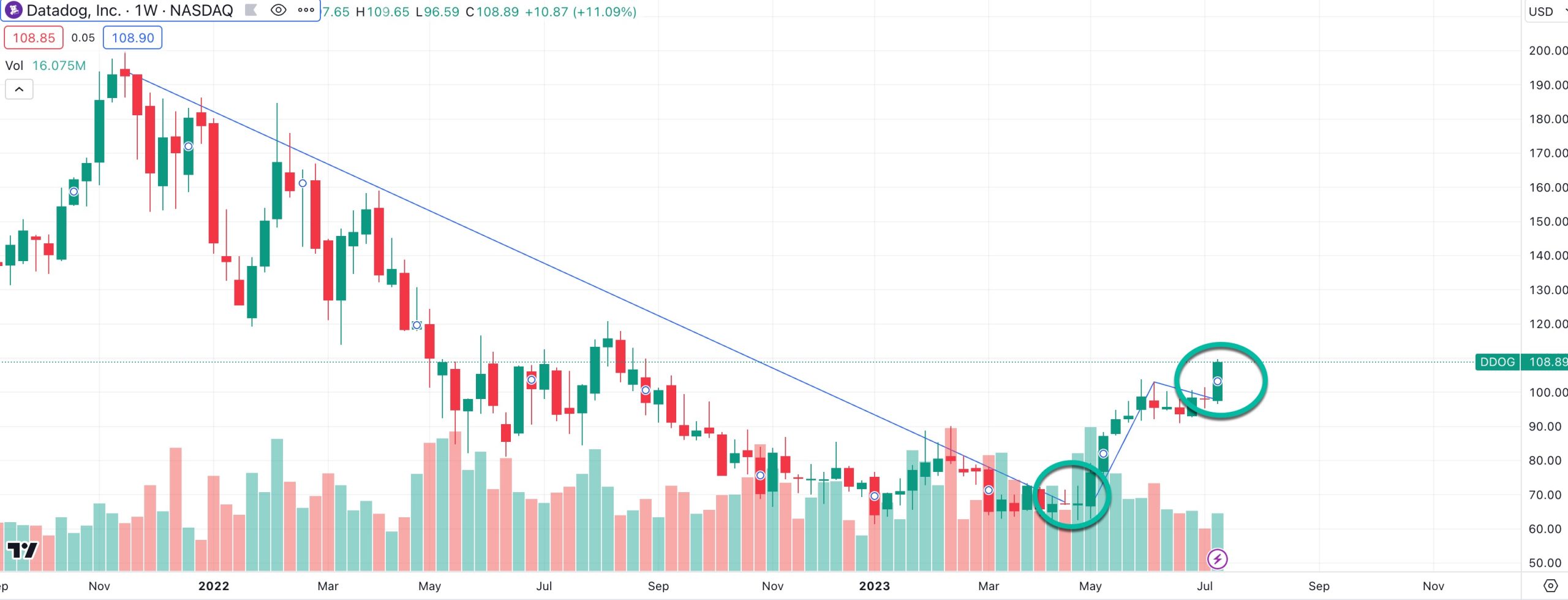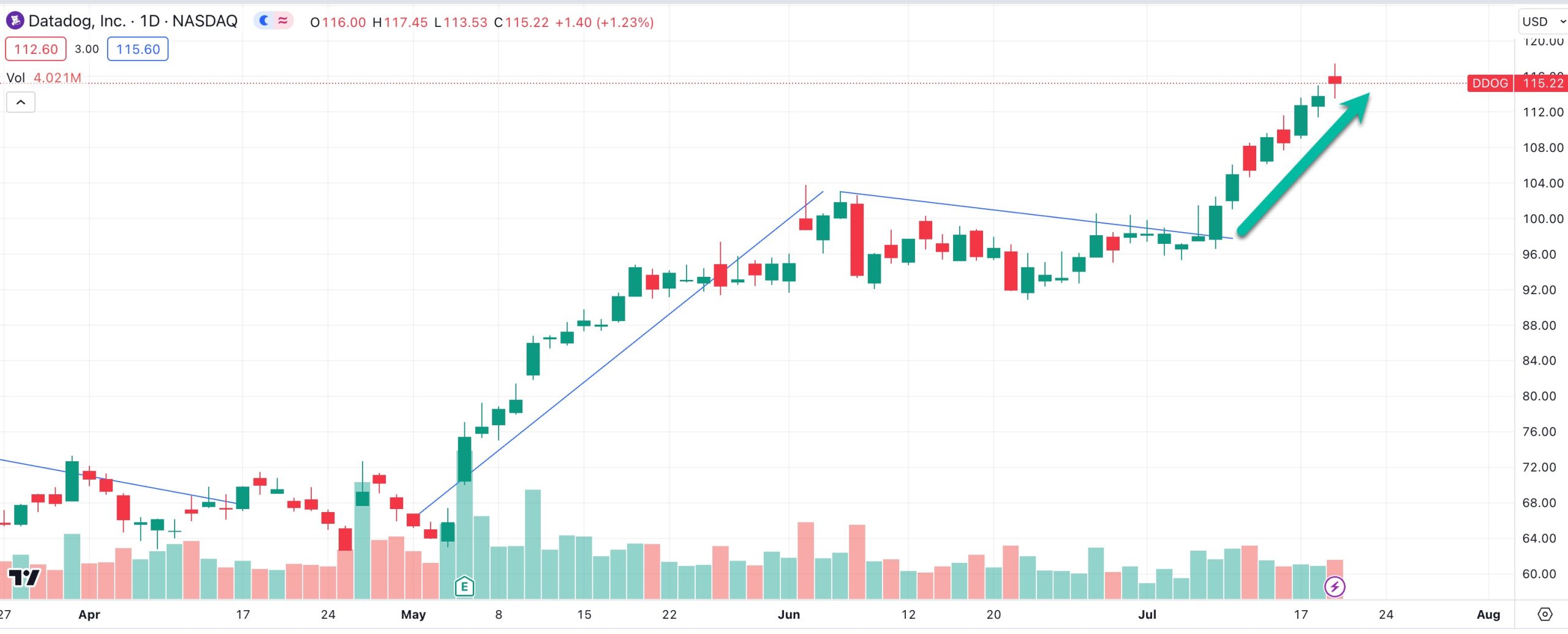Spotlight: How To Spot a Breakout
Perhaps there is no better technical pattern to master if you want to consistently and predictably generate superior returns than the breakout.
It’s a generic term that applies to a wide range of chart patterns, including basic support and resistance, as well as flag patterns, cup-and-handles, and many others. So, how do you spot a breakout on a chart?
Key Points
- Technical chart breakouts can be more easily spotted on longer term time horizons, such as weekly versus daily charts
- A bullish break following a long basing period can be the catalyst to a sustained move
- A bull flag pattern breakout on a weekly timeline puts the odds in your favor over a large sample set of trades
DataDog Breakout
Another example of a breakout occurred recently with Datadog, which burst forth from a bull flag pattern on a weekly timeline. You can see in the chart below that essentially two breakouts occurred over recent months.
The first is that, after a full year or more in a downtrend, Datadog finally broke above its resistance line near the $70 range. Then as it gathered steam and rallied all the way up to $100 per share, it pulled back to form a bull flag pattern.
Once that pattern had formed, a breakout above the flag suggested that the stock had a long way to run. Again, there are no guarantees but this is precisely the action you want to see if you are looking to capitalize on a trend. Wait for the break, and then pounce.
Now let’s follow up on Datadog to see whether it made progress after breaching above that bull flag pattern.
You can see in this case the stock rallied towards $115 in the subsequent days.
And for those looking to goose returns even further, another string to the bow that you can add following this kind of move is to sell calls against the stock you own when it reaches the upper Bollinger Band.
Not every stock will offer a good premium but Datadog is a particularly good candidate that provides generous premiums north of 3% on average monthly. There’s a reason they are so high and that’s because the stock is, as you can see, quite volatile. But if you’re willing to run the gauntlet of share price volatility, those at-the-money premiums are compelling, and even better when applied after a breakout and when the stock is extended.





